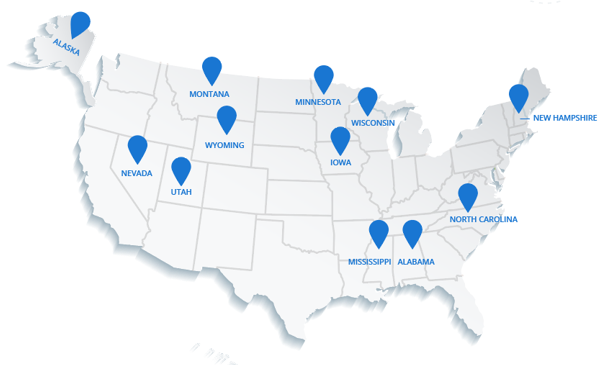2024 is shaping up to be a pivotal year for Certified Registered Nurse Anesthetists (CRNAs). With a confluence of factors driving increased demand, legislative advancements, and growing public awareness, CRNAs are primed to play an even more central role in healthcare delivery. Here's why 2024 could be the year of the CRNA:
- Soaring Demand:
The demand for CRNAs is already outpacing supply, and this trend is projected to continue. According to the Bureau of Labor Statistics, the CRNA job market is expected to grow by 19.3% between 2021 and 2031, much faster than the average for all occupations. This is driven by several factors, including:
- Aging population: The increasing number of older adults undergoing surgery is a major driver of demand for anesthesia services.
- Shortage of anesthesiologists: The physician workforce faces a shortage of anesthesiologists, further creating opportunities for CRNAs.
- Cost-effectiveness: CRNAs offer a cost-effective alternative to physician anesthesiologists, making them attractive to healthcare providers.
- Legislative Wins:
CRNAs have been actively advocating for legislative reforms that expand their practice scope and autonomy. In 2024, several key victories could further empower CRNAs:
- Medicare Independent Billing: The passage of the Medicare Independent Billing Act for Advanced Practice Nurses would allow CRNAs to bill Medicare directly for their services, removing dependence on physician supervision. This could significantly improve access to anesthesia care in rural and underserved areas.
- State Practice Acts: Several states are considering legislation that would grant CRNAs full practice authority, allowing them to independently manage anesthesia care without physician oversight. This would further enhance CRNAs' ability to meet the growing demand for anesthesia services.
- Public Recognition:
The public is becoming increasingly aware of the role CRNAs play in safe and effective anesthesia care. This is due to:
- CRNA advocacy: Increased efforts by CRNA professional organizations to educate the public about their qualifications and contributions.
- Media coverage: Positive media portrayals of CRNAs in action are raising awareness of their expertise and dedication.
- Patient satisfaction: Studies consistently show high patient satisfaction with CRNA-provided anesthesia care.
- Technological Advancements:
Technological advancements are also playing a role in expanding CRNA practice:
- Tele-anesthesia: This technology allows CRNAs to remotely monitor patients undergoing anesthesia, increasing access to care in remote locations.
- Point-of-care ultrasound: CRNAs are increasingly utilizing ultrasound technology to guide nerve blocks and other procedures, further enhancing their autonomy and skillset.
- A Changing Healthcare Landscape:
The healthcare landscape is shifting towards value-based care, where providers are rewarded for delivering high-quality care at lower costs. CRNAs are well-positioned to thrive in this environment, given their ability to deliver excellent anesthesia care while keeping costs contained.
While it's still early days, 2024 has the potential to be a game-changer for CRNAs. With strong demand, legislative progress, growing public awareness, and technological advancements, CRNAs are poised to further solidify their critical role in healthcare delivery. As advocates and policymakers continue to work towards expanding CRNA practice, 2024 could be the year that truly marks the rise of the CRNA.
Sources:
- Bureau of Labor Statistics: https://www.bls.gov/
- American Association of Nurse Anesthetists: https://www.aana.com/
- National Association of Nurse Anesthetists: https://www.aana.com/
- Centers for Medicare & Medicaid Services: https://www.cms.gov/
- American College of Surgeons: https://www.facs.org/
.png?width=50&height=50&name=Cube-Logo-150x150%20(1).png)
December 27, 2023




Comments